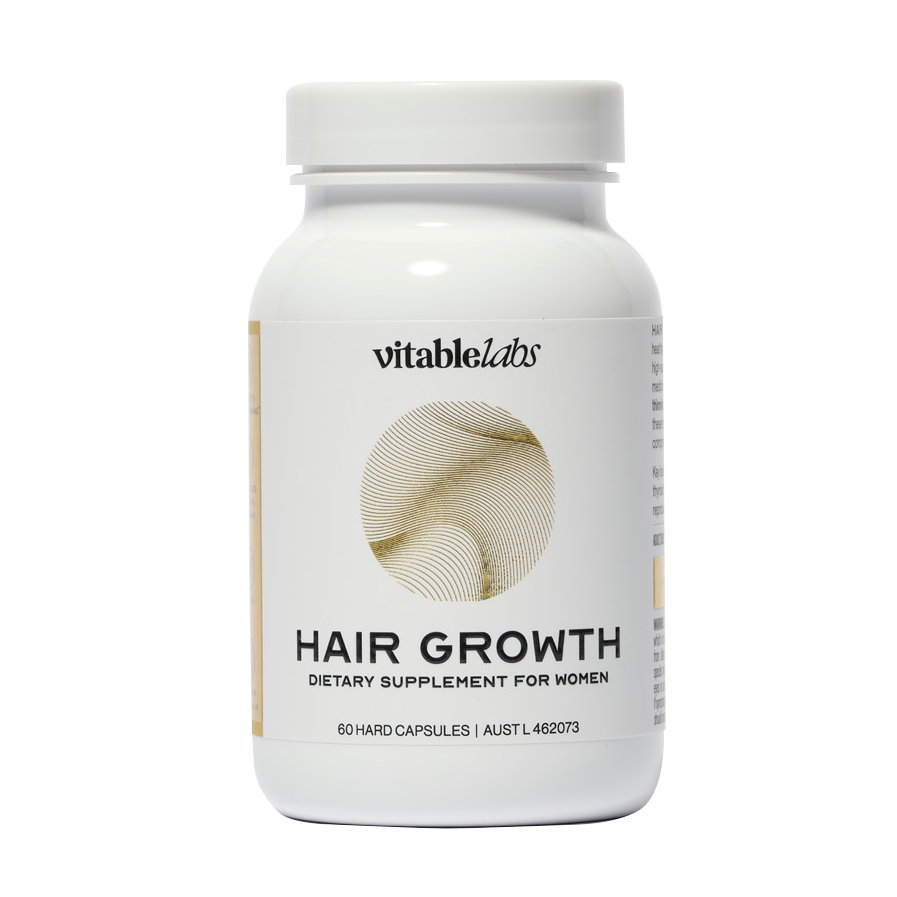Living in the digital era means that we are connected to our screens during all hours of our waking lives. While this has many conveniences, it does not bode well for our precious eye health.
Digital eye strain and other vision problems are commonplace (1), especially as most things that we do in our professional and personal lives require the use of mobile phones, tablets and computers, or televisions.
Here we will talk about the basics of our eyes, eye care and eyesight, and what you can do to protect them. Among the many ways you can protect your eyes, one is eating a well-balanced diet and incorporating nutritional supplements. A key supplement you can consider taking for your eye health is omega-3.
Learning about eyes and eyesight
Your eyes allow you to see and provide you with the visual awareness needed to navigate around your physical surroundings. Of the five basic senses, eyesight proves to be the most important as 80 percent of everything you need to learn to function effectively in the world, is processed by the sense of sight (2).
This fascinating function is carried out by a complex system of cells, nerves and tissues that make up the eye:
The cornea is the dome-shaped front layer of the eye that bends the light that enters our eye, while the pupil—the black dot in the center of our eye—is where light passes through. It expands when the light is dim, and shrinks when the light is bright (4).
The iris, the pigmented part of our eye, is actually a small muscle in itself that controls the pupil's dilating mechanism, as well as the lens that helps process the light that enters our eyes (4).
The retina is of great importance as it transforms the light coming through our eyes into electrical signals sent to the brain which are subsequently turned into images of objects and scenes that we recognize (4).
Finally, there is the optic nerve that is responsible for transmitting electrical signals from the retina to the brain, and most surprisingly, effects tears. Tears are just as much a part of healthy eyes because tears lubricate eyes and help them focus more efficiently while also protecting them from irritation and infection (4).
Research has found that over 13 million Australians have been diagnosed with at least one or more forms of long-term eye impairment (5). This reveals to us how easily we tend to take healthy eyesight for granted, and if compromised in any way, this could have serious implications on our health and quality of life.
In the next section, we tackle how to maintain, or improve, eyesight.
Promoting eye health
Using our eyes during every waking moment, through every day of our lives, puts immeasurable strain on them. Experiencing some degree of wear and tear in our eyes is expected and inevitable of course, but this should certainly not stop us from reducing eyesight stress whenever possible.
Eye care need not be a complicated or expensive regimen. What is important is that eyesight health habits are kept consistent and that you are diligent in finding new ways to promote eye health.
Get your eyes checked
Following a few simple steps such as getting your eyes checked regularly (most frequently once every six months) to determine if your eyes are functioning the way they should, should keep serious issues of the eyes at bay. Like most aspects of health, preventive measures are always better than waiting for a cure. If you're showing physical signs of distress or have severe symptoms of pain don't delay booking a doctor's appointment to get some expert advice.
Protective eyewear
Another measure you can take is to wear protective eyewear. Even with 20/20 vision, you can still benefit from glasses that have special lenses specially made to guard you against prolonged screen time or reading. For individuals that engage in activities or have jobs that pose hazards to eyes, always wear prescribed protective gear such as goggles or full face shields to minimise the potential of eye injury (6).
Exercise and diet
Regular exercise can help prevent a variety of health issues that can lead to vision problems, such as diabetes and high blood pressure (4).
The same can be said about employing a well-rounded diet. The kind of food and beverages we consume should ideally be packed with nutrients that our eyes need to function (1).
Compared to other organs, the eyes in particular are highly enriched with omega-3 fatty acids, a substance that accounts for over half of the total fat content of the retina. These fatty acids have long been known to provide benefits that protect our eyes, as new studies have found that omega-3 can prevent age-related vision loss (8). It is well worth exploring increased intake of foods high in omega-3, or in other cases, taking dietary accompaniments such as Vitable Australia's veg omega supplements, which contain vegan-friendly omega-3.
Taking omega-3 for eyes
Omega-3 is a healthy form of fat that is found in select kinds of fish and in some nuts and seeds. Omega-3 is necessary in keeping eyes performing efficiently and resilient to stress (9).
Looking more deeply into the science of omega-3 for eye health, we note that docosaxhexaenoic acid, or DHA for short, is considered the most complex form of omega-3. DHA protects us against a slew of diseases, including those that affect our eyes (10). In fact, the retina is mainly composed of DHA, and photoreceptors. These very cells that make vision possible, have more DHA than any other cells in our body (10).
The benefits of omega-3 for eye health
Taking enough omega-3 for eye health affords us several benefits. Especially when combined with other health habits that protect our eyes, getting daily omega-3 for eye health can do wonders.
A well-rounded lifestyle complemented by omega-3 for eye health means that our eyes may be able to be more resilient towards common stressors such as muscle strain from prolonged screen time, bright lights from gadget use, and even the natural wear and tear that occurs with age (10).
It is important to understand that the body cannot produce omega-3 on its own (7). This is why it is reccomended that we eat well in order to consume enough of this nutrient for eye health, or in some cases, take supplements to fill in the gaps.
Increasing omega-3 for eyes through diet and supplementation
The most practical way to increase Omega-3 for our eyes is through the food we eat (11). As mentioned previously, certain fish species are still the best sources for omega-3 for eyes. However, there are some individuals that may be unable to consume fish for dietary or lifestyle reasons.
Vegans, for example, may have difficulty obtaining this nutrient from food sources. They may be limited to very few nuts, seeds, and plant oils. If not regularly eaten alongside other eye health-boosting foods, these plant-based alternatives for omega-3 for eye health may not be sufficient (12).This can lead to deficiency in omega-3 which can heighten risk of eye problems (13).
Fortunately, supplementation is another effective way to make sure you receive enough omega-3 for eyes (14). In fact, Vitable Australia's Vegan Omega supplements are now readily available and can be consumed by vegans as well as others.
Vegan omega as the best omega-3 for eye health supplements
Flaxseed, walnuts, and algal oil are plant-based alternatives that can be used to produce vegan omega-3 for eye health supplements (15). Algal oil, in particular, is derived from microalgae, which omega-3-rich fish species consume themselves (16). Consider trying out Vitable Australia's vegan omega supplements that are formulated with algal oil and can provide you with your daily dose of omega-3.
Vitable Australia is the health service you can consider if you're considering omega-3 for eye health. They can provide you with a supplement subscription that you can customise according to your needs. Their vitamin packs are tailored to provide your body the right nutrients and minerals it needs everyday, and best of all, they're delivered right to your doorstep.! Order your Vitable Australia's personalised vitamin delivery service and more now!
*Always read the label. Follow the directions for use. If symptoms persist, talk to your health professional. Vitamin and/or mineral supplements should not replace a balanced diet.
References:
- American Optometric Association Content Team. “Computer vision syndrome”. American Optometric Association: Aoa.Org. Published December 17, 2007 on https://www.aoa.org/healthy-eyes/eye-and-vision-conditions/computer-vision-syndrome?sso=y. Accessed December 23, 2021.
- Vision Initiative Content Team. “How your eyes work”. Vision Initiative: Visioninitiative.Org.Au. Published July 2, 2020 on https://www.visioninitiative.org.au/common-eye-conditions/how-your-eyes-work. Accessed December 23, 2021.
- Better Health Channel Content Team. “Eyes explained”. Better Health Channel: Betterhealth.Vic.Gov.Au. Published July 12, 2013 on https://www.betterhealth.vic.gov.au/health/conditionsandtreatments/eyes. Accessed December 23, 2021.
- Cleveland Clinic Content Team. “Vision”. Cleveland Clinic: My.Clevelandclinic.Org. Published March 4, 2020 on https://my.clevelandclinic.org/health/articles/21204-vision. Accessed December 23, 2021.
- Australian Institute of Health and Welfare Content Team. “Eye health”. Australian Institute of Health and Welfare: Aihw.Gov.Au. Published February 11, 2021 on https://www.aihw.gov.au/reports/eye-health/eye-health/contents/how-common-is-visual-impairment. Accessed December 23, 2021.
- Australian Government Department of Health Content Team. “Possible risk factors for eye disease”. Australian Government Department of Health: Health.Gov.Au. Published December 2008 on https://www1.health.gov.au/internet/publications/publishing.nsf/Content/ageing-eyehealth-risk-factors.htm~ageing-eyehealth-risk-factors-4.htm~ageing-eyehealth-risk-factors-4-7.htm. Accessed December 23, 2021.
- Better Health Channel Content Team. “Dietary fat”. Better Health Channel: Betterhealth.Vic.Gov.Au. Published on https://www.betterhealth.vic.gov.au/health/healthyliving/fats-and-oils. Accessed December 22, 2021.
- Harvard Health Publishing Content Team. “Omega-3 for your eyes”. Harvard Health Publishing: Health.Harvard.Edu. Published August 1, 2012 on https://www.health.harvard.edu/heart-health/omega-3-for-your-eyes. Accessed December 23, 2021.
- Medline Plus Content Team. “Facts about polyunsaturated fats”. Medline Plus: Medlineplus.Gov. Published May 26, 2020 on https://medlineplus.gov/ency/patientinstructions/000747.htm. Accessed December 22, 2021.
- Fighting Blindness Foundation Content Team. “Can DHA save your vision?”. Fighting Blindness Foundation: Fightingblindness.Org. Published November 29, 2012 on https://www.fightingblindness.org/research/can-dha-save-your-vision-1867. Accessed December 23, 2021.
- National Institutes of Health Content Team. “Omega-3 Fatty Acids”. National Institutes of Health Office of Dietary Supplements: Ods.Od.Nih.Gov. Published November 21, 2018 on https://ods.od.nih.gov/factsheets/Omega3FattyAcids-Consumer/. Accessed December 23, 2021.
- Mayo Clinic Content Team. “Omega-3 in fish: How eating fish helps your heart”. Mayo Clinic: Mayoclinic.Org. Published September 28, 2019 on https://www.mayoclinic.org/diseases-conditions/heart-disease/in-depth/omega-3/art-20045614. Accessed December 23, 2021.
- Zhang, A. C., Singh, S., Craig, J. P., & Downie, L. E. “Omega-3 Fatty Acids and Eye Health: Opinions and Self-Reported Practice Behaviors of Optometrists in Australia and New Zealand”. National Center for Biotechnology Information: Pubmed.Ncbi.Nlm.Nih.Gov. Published April 22, 2020 on https://www.ncbi.nlm.nih.gov/pmc/articles/PMC7230711/. Accessed December 23, 2021.
- Lane, K., Derbyshire, E., Li, W., & Brennan, C. “Bioavailability and Potential Uses of Vegetarian Sources of Omega-3 Fatty Acids: A Review of the Literature”. National Center for Biotechnology Information: Pubmed.Ncbi.Nlm.Nih.Gov. Published 2014 on https://pubmed.ncbi.nlm.nih.gov/24261532/. Accessed December 22, 2021.
- National Institutes of Health Content Team. “Omega-3 Fatty Acids”. National Institutes of Health Office of Dietary Supplements: Ods.Od.Nih.Gov. Published November 21, 2018 on https://ods.od.nih.gov/factsheets/Omega3FattyAcids-Consumer/. Accessed December 23, 2021.
- Lane, K., Derbyshire, E., Li, W., & Brennan, C. “Bioavailability and Potential Uses of Vegetarian Sources of Omega-3 Fatty Acids: A Review of the Literature”. National Center for Biotechnology Information: Pubmed.Ncbi.Nlm.Nih.Gov. Published 2014 on https://pubmed.ncbi.nlm.nih.gov/24261532/. Accessed December 23, 2021.
- Bernstein, A. M., Ding, E. L., Willett, W. C., & Rimm, E. B. “A Meta-Analysis Shows That Docosahexaenoic Acid from Algal Oil Reduces Serum Triglycerides and Increases HDL-Cholesterol and LDL-Cholesterol in Persons without Coronary Heart Disease”. National Center for Biotechnology Information: Pubmed.Ncbi.Nlm.Nih.Gov. Published November 23, 2011 on https://pubmed.ncbi.nlm.nih.gov/22113870/. Accessed December 23, 2021.







